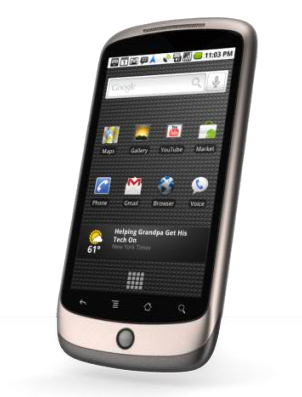Letter to Google about the Nexus One
Dear Google,
You failed, it’s true. And you admit that you failed. And while you admit that you didn’t do everything right, you didn’t do everything wrong either. More importantly, the reasons you think you failed and the real reasons you failed are not the same. You didn’t fail because people want to be able to hold a phone in their hands before a purchase (though that may be true). You failed because, despite your best efforts, you didn’t offer something the customer wanted.
Okay, everyone wanted a Nexus One, but they wanted it on Verizon, AT&T, or Sprint. They didn’t want it on T-Mobile. And while you offered it unlocked for a price, most didn’t understand why anyone would pay that price. Most people have the mindset that asks, “Why would I pay for a phone without a plan when I’m going to have to pay the same each month either way?” Sure, you can use it on a GSM network of your choosing, but the Nexus One wasn’t that incredible. I realize fully that other networks probably weren’t willing to work with you on this (at least in part because it would disrupt their whole ecosystem among other reasons), but you’re Google. Google makes new rules that people love. You offer what you do best for free and so we’re all customers! And because we’re all customers, advertisers are more than happy to pay you so much for a little link to their site on your search page.
So what should you have done? Well, that’s more difficult. We customers would love it if you gave us a phone that would work on any network that didn’t cost $500 and wasn’t tied to our least favorite phone network, but how do you do it?
One Phone First you have to develop a dual band phone. This phone will work on T-Mobile and AT&T, but it will also work on Verizon and Sprint. I’m no master of cellular technology so this might sound stupid but why don’t you develop a CDMA SIMM card that will plug into a GSM phone and make the phone compatible with CDMA carriers? Maybe that won’t work, but there is no reason why you can’t build a phone that would work on CDMA towers or on GMS tower if it had a SIMM card. The reason you need this one phone (and not a GSM phone and a CDMA phone) is because your customers truly need to be able to move from one network to any other at a whim. When you do this, you have to market that very heavily or customers won’t know why buying the phone is a good idea. Tell your customers that if you buy the phone and they go to carrier X and carrier X tries to gouge them that they can take their same phone and move to carrier Y.
Low Price Now, this is the part that you might not like. You will have to offer the phone for less in order to make more. You won’t be able to sell your phone for $500 when they can get a comparable one for $200 at any carrier. If you offer a “one phone” then you might be able to get away with $300, but let’s be honest, it doesn’t cost that much to make a phone, I’d sell it for $150. We all know that you’re not interested in making money from the hardware sales. You want to make a profit when people use your services on their new phone. You win wether people pay you a dime for the phone or not. (Of course its the same if Verizon sells 1,000,000 phones alone or if Verizon sells 500,000 and you sell 500,000.) If you want to revolutionize the phone industry (which I’m not entirely convinced was you plan) then you would have sold the phone at cost (or close to it) and made your money when people used the phone.
This really is your best option. You make a lot of money from search, as I’m sure you know, and you also know that mobile search is going to be big (so you’re trying to get in big now). If you sell a billion phones and don’t make a cent from the hardware sales, you still make a lot from mobile advertising. And if you revolutionize the cell phone industry (making prices go down all around) then people will love you even more than they do now.
Just tying to help,
Mahon
